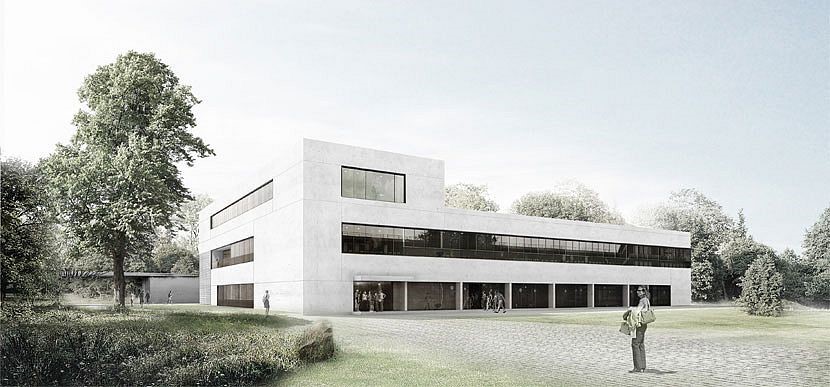
Labatory for Advanced Spin Engineering (LASE)
Service:
Supervision LPH8
Builder:
LBB Landesbetrieb Liegenschafts- und Baubetreuung Land Rheinland-Pfalz
Architects:
Burckhardt und Partner, Basel
R. Becker Architekten GmbH, Berlin
GBA:
approx. 7.000m²
Deadline:
Completion 2020
Award procedure:
Individual award
In order to better understand known applications of spins and to make new technological developments possible, a new research building, the Laboratory for Advanced Spin Engineering (LASE), is to be constructed at the TU Kaiserslautern. The realization of the intended interdisciplinary synergies from the four departments of physics, chemistry, mechanical and process engineering, and electrical engineering and information technology will be comprehensively possible for the first time through the joint accommodation in the research building. In each of the five planned laboratory units, scientists from all departments involved in LASE will work together.
The urban planning concept envisages a compact structure which, with its cubature and its position in the terrain, on the one hand takes up the existing scale of the existing institute buildings and, on the other hand, makes reference to existing access systems. The building itself is developed over two floors, to which a further floor is added in the eastern area to stagger the building volume. The existing topography is exploited in such a way that the building on the higher Gottlieb-Daimler-Strasse appears only as a 1 or 2-story building and, in contrast to the higher buildings, as a 2 or 3-story building. This design of the building volume cleverly mediates the different building heights of the surrounding buildings. At the same time, a prelude is created for the development that closes off the campus in the south.
The individual laboratory units are treated as closed volumes that are "wrapped around" by "open" uses such as corridors, combination zones or tea cakes as well as the associated office spaces in such a way that these ancillary areas are of great importance with regard to the required exchange of information between the individual disciplines. It is precisely these areas between the closed laboratory blocks that represent the required open spaces in which the necessary exchange of knowledge takes place. In this way, research content and results become transparent and can be accessed and experienced by all.